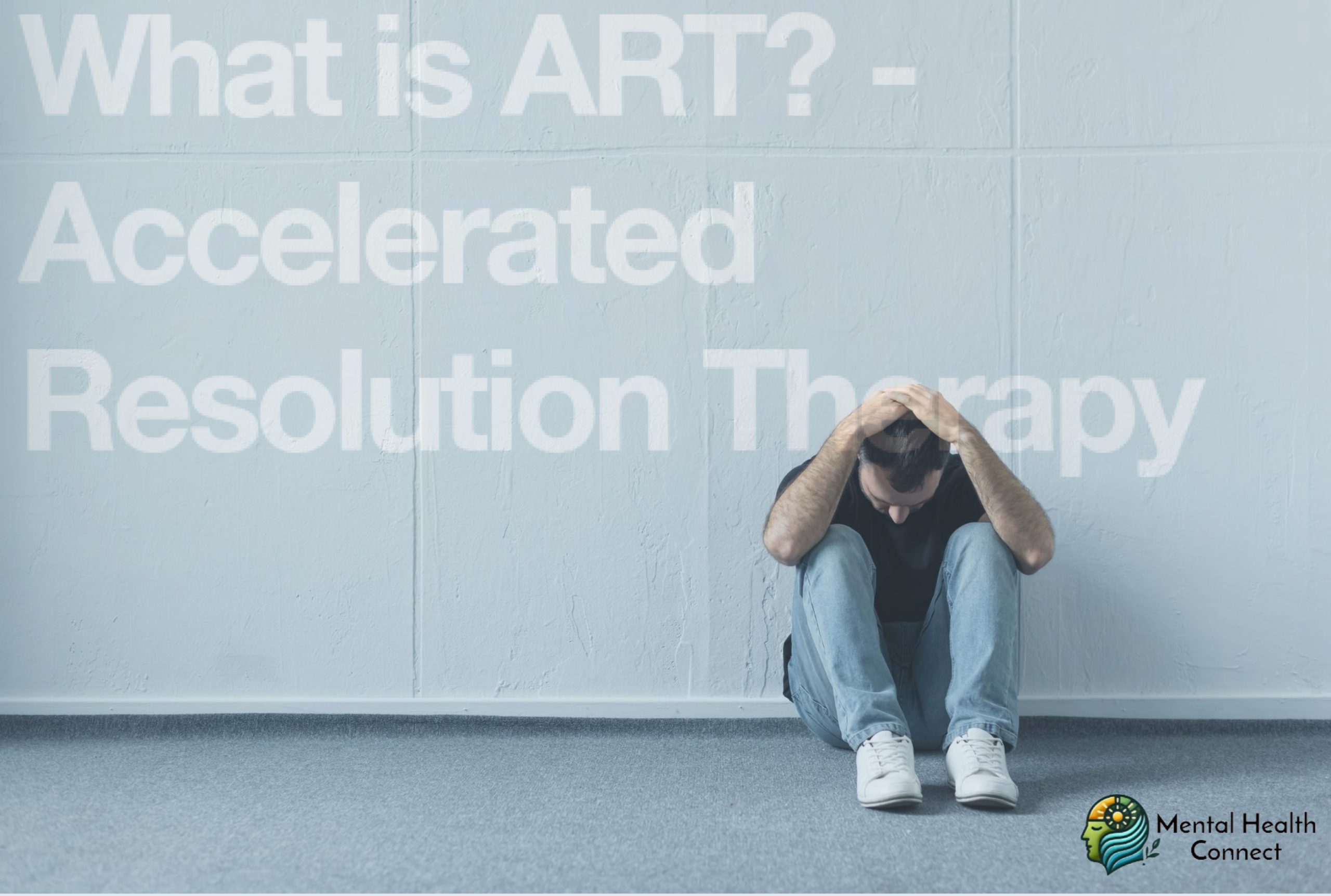What You Need to Know About Accelerated Resolution Therapy (ART)

In the landscape of trauma treatment, Accelerated Resolution Therapy (ART) has emerged as a promising approach that offers relief in a remarkably short timeframe. Unlike traditional talk therapies that may take months or years to process traumatic experiences, ART often delivers meaningful results in just a few sessions. This innovative therapy combines established psychological principles with unique eye movement techniques to help individuals process and overcome distressing memories and emotions. Let’s explore what makes this therapy distinctive, how it works, and who might benefit from it.
What is Accelerated Resolution Therapy?
Accelerated Resolution Therapy is an evidence-based psychotherapy developed by Laney Rosenzweig in 2008. It falls under the category of eye movement therapies, similar to EMDR (Eye Movement Desensitization and Reprocessing), but with distinct differences in approach and protocol.
ART integrates elements from several established therapeutic modalities:
- Eye Movement Desensitization and Reprocessing (EMDR)
- Cognitive Behavioral Therapy (CBT)
- Brief Psychodynamic Therapy
- Gestalt Therapy
The central premise of ART is that troubling memories and images can be “reprogrammed” in the brain through directed eye movements combined with specific memory visualization techniques. This reprogramming allows individuals to still recall difficult events but without the emotional distress or physiological arousal that previously accompanied these memories.
The Science Behind ART
How does moving your eyes from side to side while thinking about traumatic memories lead to healing? While researchers are still investigating the precise mechanisms, several theories explain why ART appears effective:
1. Working Memory Taxation
During ART, the brain’s working memory becomes taxed by simultaneously focusing on troubling memories while following the therapist’s hand with smooth eye movements. This dual-attention demand makes it difficult for the brain to maintain the emotional intensity of the memory, creating an opportunity to “recode” it with less emotional charge.
2. REM-Like Processing
The horizontal eye movements in ART resemble those that occur during REM (Rapid Eye Movement) sleep a stage when the brain naturally processes experiences and emotions. ART may effectively simulate this natural processing mechanism while the person is in a conscious, directed state.
3. Brain Connectivity Changes
Research using neuroimaging suggests that eye movement therapies may help reconnect areas of the brain that become dysregulated during traumatic experiences, particularly between the amygdala (emotional processing center) and prefrontal cortex (rational thinking center).
How an ART Session Works
A typical ART session follows a structured protocol that can be completed within 60-75 minutes. Here’s what to expect:
1. Assessment and Preparation
The therapist first assesses your readiness for ART and identifies which memories or issues to address. They’ll explain the process and help you prepare by teaching grounding techniques.
2. Memory Activation
You’ll be asked to briefly recall a troubling memory or image just enough to bring it into awareness. Importantly, you don’t need to verbalize or share details of the memory with the therapist unless you choose to.
3. Eye Movement Sets
While holding the memory in mind, you follow the therapist’s hand as it moves horizontally across your field of vision. These smooth pursuit eye movements typically last for 30-40 seconds per set.
4. Memory Reconsolidation
After each set, the therapist checks in about what you’re experiencing. The process continues with your internal experience guiding the session. You might notice the memory changing, emotions shifting, or physical sensations transforming.
5. Voluntary Image Replacement
A unique aspect of ART is the “voluntary image replacement” technique. After processing the troubling memory, you’re guided to visualize a positive image that you’d prefer to have when recalling the memory context. This step helps “replace” distressing images with more neutral or positive ones.
6. Integration
The session concludes with integration exercises to help solidify the changes and prepare you to return to daily activities.
What Makes ART Different from Other Trauma Therapies?
Several key features distinguish ART from other trauma-focused therapies:
Compared to EMDR
While both use eye movements, ART differs from EMDR in several ways:
- ART typically requires fewer sessions (1-5 vs. 8-12+ for EMDR)
- ART includes the voluntary image replacement component
- ART follows a more directive protocol
- Clients don’t need to verbally share traumatic details in ART
Compared to Cognitive Processing Therapy (CPT)
Unlike CPT, which focuses on challenging distorted beliefs about trauma through written narratives and cognitive restructuring, ART:
- Works more directly with sensory memory components
- Requires less homework
- Doesn’t require detailed verbal processing of the trauma
Compared to Prolonged Exposure (PE)
While PE gradually exposes clients to feared memories for habituation, ART:
- Doesn’t require repeated, extended exposure to the traumatic memory
- Focuses on changing the memory rather than habituating to it
- Typically causes less distress during sessions
Who Can Benefit from ART?
ART has shown promise for treating various conditions and concerns:
Trauma-Related Conditions
- Post-Traumatic Stress Disorder (PTSD)
- Complex trauma
- Childhood abuse or neglect
- Military combat trauma
- First responder trauma
- Sexual assault
Other Conditions
- Anxiety disorders
- Phobias
- Depression
- Grief and loss
- Sleep disturbances
- Substance use disorders (as part of comprehensive treatment)
ART may be particularly suitable for:
- Individuals who find it difficult to verbally discuss traumatic experiences
- Those who haven’t responded well to traditional talk therapies
- People seeking rapid symptom relief
- Individuals who want to address specific traumatic memories
- Those with limited time or resources for extended therapy
The Evidence Base for ART
Although newer than some other trauma therapies, ART has an expanding research base supporting its effectiveness:
- A randomized controlled trial with military personnel showed significant reductions in PTSD symptoms after just 3.7 sessions on average
- A study with civilians found 80% no longer met PTSD criteria after ART treatment
- Research with veterans demonstrated improvements in sleep quality, depression, and anxiety alongside PTSD symptom reduction
ART has been recognized by the SAMHSA National Registry of Evidence-based Programs and Practices, and is increasingly being adopted at military treatment facilities, VA hospitals, and trauma treatment centers.
Potential Limitations and Considerations
While ART offers many advantages, it’s important to consider potential limitations:
Not for Everyone
ART may not be appropriate for individuals with:
- Active psychosis
- Severe dissociative disorders
- Certain neurological conditions affecting eye movements
- Acute suicidal ideation
- Unwillingness to temporarily experience some emotional distress
Emotional Processing
Although generally well-tolerated, ART involves processing emotional material, which can temporarily increase distress during or between sessions.
Availability
Despite growing popularity, finding ART-certified therapists may be challenging in some areas compared to more established therapies.
Research Base
While promising, the research on ART is still developing compared to longer-established trauma therapies like EMDR, CPT, and PE.
Finding an ART Therapist
If you’re interested in exploring ART, consider these steps:
- Check the official directory: The Accelerated Resolution Therapy International website maintains a directory of certified practitioners.
- Verify credentials: Look for therapists who have completed official ART training and certification, in addition to their primary mental health credentials (LCSW, LMFT, Psychologist, etc.).
- Ask about experience: Inquire about the therapist’s experience specifically with ART and with your particular concerns.
- Insurance coverage: Check whether your insurance covers ART sessions (most cover it as a specialized form of psychotherapy).
- Telehealth options: Some ART practitioners offer telehealth services, though the eye movement component requires video capability.
What to Expect from ART Treatment
If you decide to pursue ART, here’s what a typical treatment course might look like:
Duration
Most people complete ART treatment in 1-5 sessions, with each session lasting 60-75 minutes. Sessions are usually scheduled weekly, though twice-weekly sessions are sometimes recommended for acute issues.
Results Timeline
Many individuals report significant relief after just one session, with continued improvement over subsequent sessions. The rapid results are one of ART’s most distinctive features.
Between Sessions
Unlike some therapies, ART typically doesn’t require homework between sessions. However, you might notice continued processing of memories and emotions between appointments, which is a normal part of the healing process.
Integration Period
After completing ART, a period of integration follows as your brain and body adjust to the memory reconsolidation. Some people experience temporary fatigue, vivid dreams, or emotional shifts during this period.
Complementary Approaches
ART often works well when combined with other therapeutic approaches:
- Mindfulness practices can help maintain emotional regulation between sessions
- Somatic therapies may further address physical aspects of trauma
- Traditional talk therapy can help integrate insights and changes from ART
- Group therapy provides social support during the healing process
Accelerated Resolution Therapy represents an exciting development in trauma treatment, offering hope for rapid relief from symptoms that have traditionally required much longer treatment courses. Its combination of efficiency, minimal disclosure requirements, and evidence-based elements makes it an attractive option for many individuals struggling with traumatic memories and their effects.
While ART isn’t a miracle cure or universally appropriate for everyone, its growing evidence base and positive clinical outcomes suggest it has earned a place in the repertoire of effective trauma therapies. If you’re struggling with troubling memories or their emotional aftermath, discussing ART with a mental health professional might open a path to more rapid healing than you previously thought possible.
Remember that healing from trauma is a personal journey, and finding the right approach often involves exploring multiple options. Whether ART becomes your primary treatment or one component of a broader healing plan, the possibility of recoding traumatic memories to reduce their emotional impact offers genuine hope for those seeking freedom from the past.
-
 Can Mindful Porn Use Support Better Mental Health?April 25, 2025
Can Mindful Porn Use Support Better Mental Health?April 25, 2025 -
 Can Marijuana Help with Depression or Make It Worse?April 25, 2025
Can Marijuana Help with Depression or Make It Worse?April 25, 2025

Leave a Reply